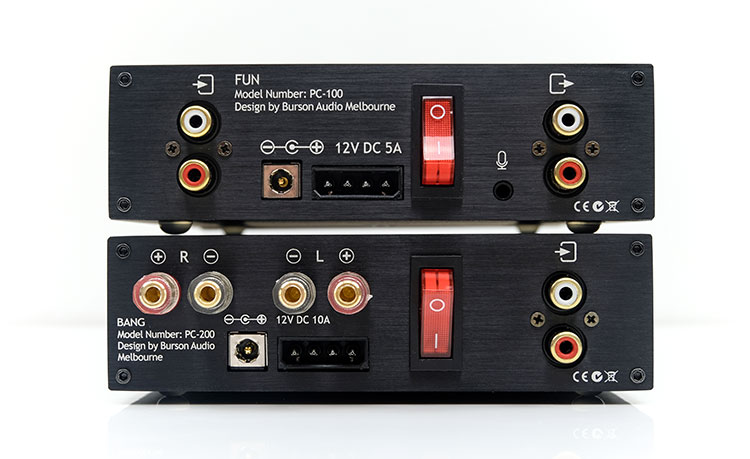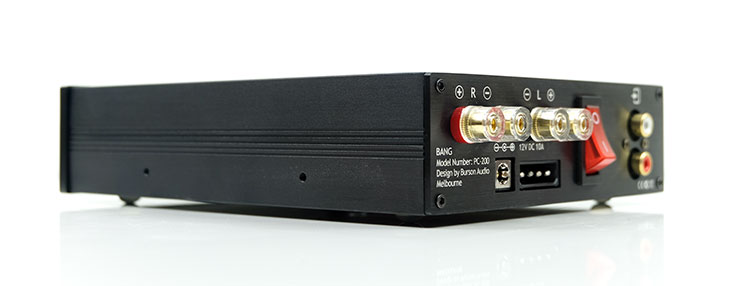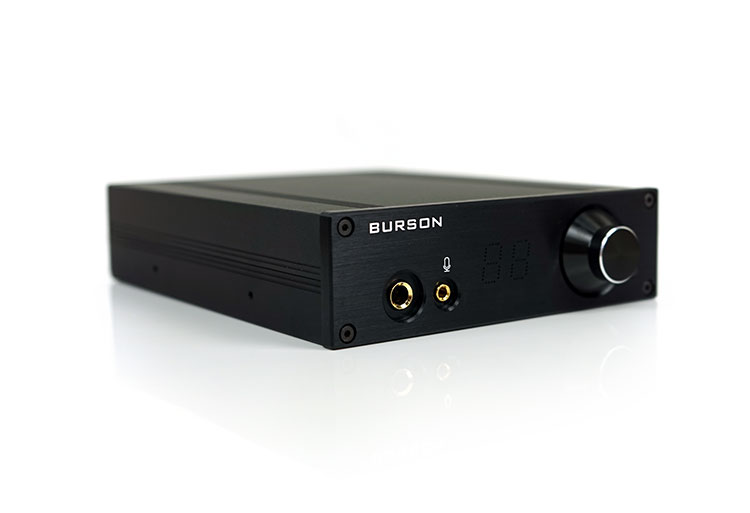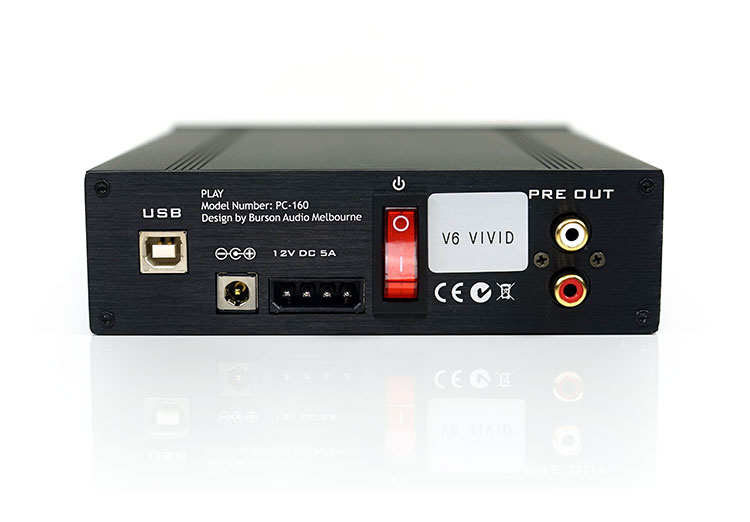Fun Sound Impressions
Without the built-in DAC of the Play the sound impressions of the Play, even with the opamp rolling are not 100% fixed in stone. Different sources with different DACs will have an impact on the final output.
Taking it old-school, for example, with a Colorfly C4 Pro line-out and the line-out of the Cypher Labs Algorhythm Solo, there were distinct differences in the Fun tonal output.
The C4 Pro was a lot smoother with more warmth in its output whereas the Algorhythm was brighter and drier but also a good deal more energetic in its delivery. Depending on your headphone either presentation may suit but it is something to be aware of.
Basic
I actually much prefer the sound of the Fun BASIC compared to the Play BASIC simply because the ES9019 DAC is not in play, at least not on my system. I found the peppy treble response and thinner timbre of the Play BASIC to be non-existent on the Fun BASIC with a smoother DAC source.
Sources like the flagship Cayin N8 brought some welcome richness and a very refined top-end with plenty of detail. Old school sources such as the line-out from the ColorFly C4 Pro sounded very pure to my ears on the BASIC.
In all our sources tested we felt Burson made a very good decision to retain this opamp config in the Fun BASIC as it seemed largely neutral and quite transparent. In other words, quite faithful to the source. Our only caveat is that staging is a touch flat and lacking in the same dynamic prowess as the more expensive opamps but otherwise the TI NE5543 inside is quite solid.
So why would you upgrade to the Vivid or Classic? In short, resolution and staging. Primarily, the immediate upgrade is in the technical domain. The BASIC just sounds a little flatter and more center focused compared to either the Vivid or Classic. Both of these opamps seem to deliver a better dynamic range and a more open-sounding soundstage than the BASIC.
Beyond that, the second factor for me is the tonal shaping these two more expensive opamps can offer. That is down to preference though so read on.
V6 Vivid
The first thing you will notice moving from the BASIC edition to the Vivid is how open the soundstage becomes. The Basic tonally is a little smoother and not quite as sparkling but the depth or power combined with the air and openness of the V6 Vivid will suck you right in.
Not only is it more immersive but the dynamic range seems much greater. The Vivid opamp tuning seems to resolve on another level pushing out micro-detail that you can pick up really easily with a quality DAC behind the Fun.
The V6 Vivid draws its power from a punchier deeper sub-bass presence rather than a warmer mid-bass and lower-mids so it is more neutral sounding than the Classics opamps but you do get some excellent instrumental clarity and speed from the Vivid performance.
The timbre, therefore, is a little cooler and the mids don’t quite have the same level of thickness as either the Classic or Basic performance. You will also lose a degree of intimacy in the mids compared to the Classic with that more neutral-sounding midrange.
Treble on the Vivid is more energetic with a little more in terms of a forward-sounding extension but never on the harsh side. I could only envisage a harsh sound if your source and recordings are already quite bright. Headphone matching with the Vivid top-end performance might be a little trickier, for example, the HE6 sounded a little too edgy for my taste with the Vivid.
V6 Classic
This is my favorite opamp out of the 3 flavors supplied by Burson. Again, there may be some slit tilt in brightness or warmth depending on your source but so long as the 2V line-out is steady then the V6 Classic should really impress those who like balanced, smooth, and slightly mid-centric sound.
It is not as ‘excitable” as the V6 Vivid and I guess Burson recognizes as much with the name Vivid attached. This is an opamp that trades aggression for forgiveness.
The V6 Classic is much more adept at bringing out the best in the likes of the old HE6 from Hifiman where a smoother treble is often required though at the cost of a low-end that is not so much rolled-off just that bit more linear than the punchy Vivid opamp.
The Classic also has a slightly warmer or richer instrumental and vocal timbre than the Vivid. The Vivid opts to remain a little cooler and leaner in part which means the Classic really pairs better with the likes of the Ether open (non-flow), particularly on female vocals.
The Classic mids are the star of the show, unlike the Vivid which nods just a bit more to low-end power and top-end extension. You will not get quite the same level of sparkle from the Classics as the Vivid but for headphones that have an edgy treble such as the HE6, I found that warmer richer tone to be a better match.
Fun Synergy
Sensitivity
The hiss levels on the Fun are actually quite low with sensitive IEMs. For the likes of Andromeda, Phantom, and VE8 I found them to be far lower than the original Play production run. I suspect that the 6Ω output rating does attenuate noise a great deal more.
Low-Z impedance skew is a risk with such a high impedance output. However, with the Andromeda, I thought the low-end was very impactful as opposed to the bright and lean sound from the 10Ω output of the R6 from HiBy.
The Fun does sound fabulous with demanding monitors such as the Vega. You get a lot more wiggle-room on the volume control and absolutely no hiss with this dynamic driver monitor. The sound is weight, aggressive, and very well-defined. Matching with the V6 Classic will also tame the high a little more than the V6 Vivid and do a good job avoiding sibilance.
Power
It is with headphones that the Fun really comes into its own. Thirsty planars do very well indeed. We tried the older LCD-2 pre-Fazor edition, the Ananda, the HE6, and HE6Se as well as MrSpeakers Ether Open. None of them maxed out on the Fun in terms of volume and agreeable headroom.
The Hifiman HE6, the original production run version, will push it the hardest with the V6 Classics installed. If you are running a HE6SE it will be a little easier than the original 4-screw version but still fairly demanding. T
he edgy treble on the HE6 is a better match also for the Basic or Classic opamps. I found the V6 Vivid timbre a little too thin and the treble presence too forward to be the perfect HE6 pairing.
In particular, the Ananda on V6 Classics and the Crosszone CZ-1 with the V6 Vivid caught my attention. The Ananda laps up that smooth mid-centric tone with an excellent vocal dynamic whereas the CS-1 does enjoy the cleaner sound and stronger treble presence of the V6 Vivid.
Bang Sound Impressions
Setup
Our setup for testing the Bang was a set of floor-standing B&W 682 S2’s and a small set of B&W 686 S2’s using Chord Company Clearway cabling and Chord Company ChordOhmic 4mm banana plug.
Clearway is an outstanding cable for the price of £10.00 per meter. It looks far more durable and more professionally built than your standard flatware or transparent tubed speaker cable.
This is a 14 AWG multi-strand OFC wire wrapped in FEP tubing with a cut around 20cm below the termination for enhanced flexibility. It has that warm and full-bodied low end on the 686 and 684 S2s but enough sparkle and energy in the top end to prevent it from sounding overly rounded or smoothed out. The clarity is also excellent.
Our sources were a mix of desktop and mobile line-outs with an iBasso DX200, Colorfly C4 Pro, and the flagship NuPrime CDP-9 DAC/pre-amp and transport.
Power
We have to talk about power first because I was a little concerned about that 29W into 8Ω load not delivering enough dynamic range or headroom to a set of floor standers at need 25W minimum.
Using the Fun as a pre-amp there is absolutely no shortage of power using the Bang in a 2.1 room setup. Having said that the 684 S2 combo is relatively easy to drive with a mean 87dB sensitivity rating so shouldn’t suck out too much more power than your average speaker.
If you are considering a near-field bookshelf experience the Bang is going to easily drive them. Our passive 686 S2’s paired with the Bang delivered with authority and with bags of headroom.
Having said all that I could barely get the Fun volume up to a quarter before things too loud. Now my own listening preference for speakers are not that loud, to begin with, but I can safely say that if you combine the Fun with the Bang on most speaker combos you will have plenty of volume control and headroom.
Line-out Voltage
My own suggestion is to go with a variable voltage line-out into the Fun for additional control. The line-out is the one area that I felt had a significant impact on the Bang’s performance regardless of the opamp used.
My older Cypher Labs Algorhythm Solo line-out was rather weak and dry sounding for my tastes with the Fun/Bang combo
2V is the minimum but my own suggestion is to select a variable line-out as opposed to fixed to provide even more volume control via the source and Fun as a pre-amp. You can also drop the input buffer from high gain to low again inside the Fun if you want to fine-tune that power output.
Opamp Choices
Matching
If you are going to use the Fun with the Bang I would highly suggest using the same opamps throughout. Thus, the V6 Classic in the Fun and then after, the additional V6 Classic in the Bang is the logical setup for the purest sound.
If you are using any other DAC then this may influence the performance of the Bang in terms of detail and tone. We noticed that the NuPrime DAC-10H and CDP9 both were highly resolving if somewhat cleaner and brighter presentations than the very smooth Colorfly C4 Pro line-out.
V6 Classic & Basic
I often explain to people why I use the 684 S2 because they do lack a little low-end power compared to my older 603 S2 from 10 years ago.
They do however excel in mids and highs with tons of clarity. I often found that power in the 603 S2 to just be a little too boomy for smaller rooms and drown out the vocal presence. It is important to me that any amping doesn’t upset that balance.
With the Basic and Classic opamps, I feel I am retaining that balance so long as the source is a 2V capable natural sounding player. Both my DX200 and C4 Pro line-out provided the most natural sound to my ears with excellent dynamic range.
Most importantly these sources combined with the V6 Classics retail that smooth natural timbre and excellent vocal focus. It will not bring out the low-end as well as the V6 Vivid but I think the timbre match is much better.
The Basic opamps sounded very neutral so they can mimic the Classic sound a little with the right source but they are not as holographic in their staging capability. Perhaps a little lacking in DR and micro-detail compared to the Classics.
V6 Vivid
The V6 Vivid was an interesting choice, Not my preference but I can see where people will go for that punchier low-end, and cleaner presentation.
It did deliver a bit more “oomph on my 684 S2 speakers but at the cost of a brighter treble and a leaner instrumental timbre which I was not a huge fan off. That is just me though. If you need more power in the sub-bass response of your speakers then the V6 Vivid is ideal.
Select Comparison
Burson Play
$299 – $549
Technical
The case for the Play can be made on a budget and space basis. If you do not happen to have a decent DAC in your system then the Play is really the best starting point.
The Play differs from the Fun with the built-in DAC and digital volume control. It still has an excellent Class A amp design and is very much on the same level as the Fun in terms of output power at 2W into 32Ω. I
t does have one slightly less MCPS (3) in its power config compared to the Fun’s 4 MCPS and for me that does have a nuanced improvement in the amplification stage of the Fun compared to the Play.
Its USB-DAC is the ES9018 with a USB input only as well as room for a Molex connection to slow nicely into a PC tower. It can also act as a pre-amp in much the same manner as the Fun with a single set of unbalanced pre-outs at the back so it can pair up with the Bang if you choose to do so.
Performance
We really liked the performance of the Play in our review earlier this year. However, I am more impressed with the Fun’s Basic opamp combo than the Plays. I believe much of that is more down to the DAC of the Play rather than the opamp and amp stage itself.
The Burson Basic opamps are fairly neutral and transparent. They do not resolve quite as well as the V6 Vivid or Classic, nor are they as potent in delivering an immersive or holographic soundstage.
However, with the ES9018 DAC in Play, I found them to be a little too lean and clean and not as forgiving as they are in the Fun using a source of your own choice. Fun has that advantage whereas Play is fixed. I would quickly recommend the Fun Basic over the Play Basic if you already had your own preferred DAC.
The same can be said for a Fun or Play matchup with the Bang. My advice is to go straight to the V6 Vivid with the Play and match with a single V6 Vivid opamp in the Bang or go to my own preferred smoother sound, the V6 Classic in both setups.
Our Verdict
I am as impressed, if not more so with the Fun and Bang compared to the Play. I really like how Burson has taken this little potent black box system from a few months ago and expanded it out now to cover even more bases.
Got a speaker system? Get the Bang. Got a DAC already? Get the Fun. Put them both together you got a small system right there that has brutal power for headphones and surprising levels of control and finesse for dedicated small room HiFi speakers and near-field monitors.
Of course, like the Play, the Fun and Bang sound best to me with the V6 Classic opamps. That’s a personal preference thing, the V6 Vivid could work really well for those who really want more low-end and better treble presence.
The Basic configuration in the Fun is pretty good also with a decent DAC behind it. The transparent neutral tone has an edge over the harder-sounding Play version.
Overall, the Play, Bang, and Fun line-up are pure “bang-for-buck” and a very welcome and soothing addition to this ever-crazy-priced audio hobby of ours.
Burson Fun Specifications
| Measurement | Package Content | ||
| Input impedance: | 38 KOhms | Burson Fun Unit | 2.5mm hex key |
| Frequency response: | ± 1 dB 0 – 35Khz | RCA Cable | 6.5mm to 3.5mm Socket Adaptor |
| THD: | <0.03% | Power Supply | 100-240V AC (12V 6A) |
| Output impedance (Head Amp): | 6 Ohm | ||
| Output impedance (Pre Out): | 25 Ohm | ||
| General | |||
| Inputs: | RCA (2V RMS line level), Mic Input | Weight: | app. 2Kg |
| Outputs: | RCA Pre-Amp / Headphone Jack / Mic out | Dimensions: | 210mm x 145mm x 45mm |
| Impedance (Headphone Jack) | Power | Signal-to-Noise Ratio | Separation |
| 8Ohm | 1.2W | 91db | 99% |
| 16 Ohm | 1.9W | 92db | 99% |
| 32 Ohm | 2.1W | 95db | 99% |
| 100 Ohm | 1W | 94db | 99% |
| 150 Ohm | 0.66W | 96db | 99% |
| 300 Ohm | 0.33W | 94db | 99.5% |
Burson Bang Specifications
| Measurement | Package Content | ||
| Input impedance: | 100 KOhms | Burson Bang Unit | 2.5mm hex key |
| Frequency response: | ± 1 dB 0 – 20Khz | Power Supply | 100-240V AC (12V 10A) |
| THD: | <0.03% | ||
| Output impedance: | 1.5 Ohm @ 1 kHz | ||
| Signal-to-Noise Ratio: | 92.5dB | ||
| General | |||
| Inputs: | 2 X RCA (2V RMS line level) | Weight: | app. 2.5Kg |
| Outputs: | 2 X Speaker Outputs | Dimensions: | 210mm x 145mm x 45mm |
| Impedance | Power | Signal-to-Noise Ratio | Separation |
| 4Ohm | 40W | 91db | 99% |
| 8 Ohm | 29W | 91db | 99% |
| 16 Ohm | 15.2W | 91db | 99% |









